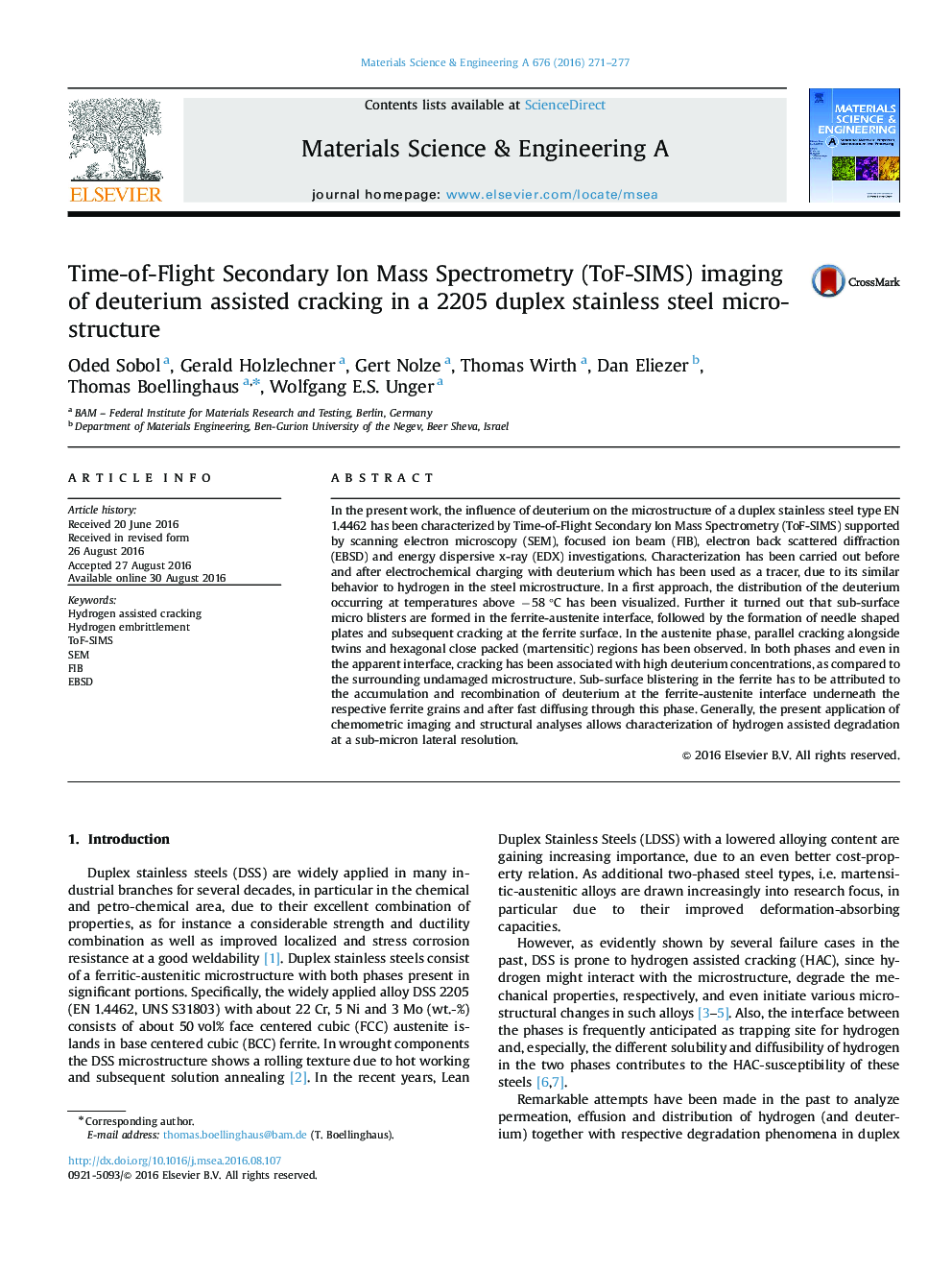| Article ID | Journal | Published Year | Pages | File Type |
|---|---|---|---|---|
| 7974734 | Materials Science and Engineering: A | 2016 | 7 Pages |
Abstract
In the present work, the influence of deuterium on the microstructure of a duplex stainless steel type EN 1.4462 has been characterized by Time-of-Flight Secondary Ion Mass Spectrometry (ToF-SIMS) supported by scanning electron microscopy (SEM), focused ion beam (FIB), electron back scattered diffraction (EBSD) and energy dispersive x-ray (EDX) investigations. Characterization has been carried out before and after electrochemical charging with deuterium which has been used as a tracer, due to its similar behavior to hydrogen in the steel microstructure. In a first approach, the distribution of the deuterium occurring at temperatures above â58 °C has been visualized. Further it turned out that sub-surface micro blisters are formed in the ferrite-austenite interface, followed by the formation of needle shaped plates and subsequent cracking at the ferrite surface. In the austenite phase, parallel cracking alongside twins and hexagonal close packed (martensitic) regions has been observed. In both phases and even in the apparent interface, cracking has been associated with high deuterium concentrations, as compared to the surrounding undamaged microstructure. Sub-surface blistering in the ferrite has to be attributed to the accumulation and recombination of deuterium at the ferrite-austenite interface underneath the respective ferrite grains and after fast diffusing through this phase. Generally, the present application of chemometric imaging and structural analyses allows characterization of hydrogen assisted degradation at a sub-micron lateral resolution.
Related Topics
Physical Sciences and Engineering
Materials Science
Materials Science (General)
Authors
Oded Sobol, Gerald Holzlechner, Gert Nolze, Thomas Wirth, Dan Eliezer, Thomas Boellinghaus, Wolfgang E.S. Unger,
